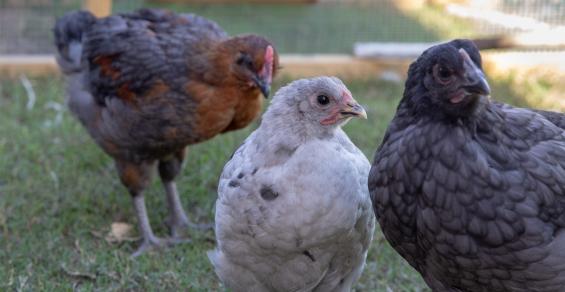North Dakota is the latest state to have a confirmed case of highly pathogenic avian influenza after it was confirmed in a backyard chicken flock in Kidder County. This is the state’s first confirmed case since 2015. HPAI has been confirmed in several counties in South Dakota as well. The flock in North Dakota is noncommercial, and the birds will be destroyed and will not enter the food system.
HPAI is a respiratory virus that is spread through contact with infected birds via fecal material, saliva and nasal discharge. Many backyard flocks may be exposed through contact with wild birds. A wild snow goose is the presumed source of contamination for the case in North Dakota, according to the state veterinarian Ethan Andress.
Protect your flock
If you own commercial or hobby poultry, you can take steps to reduce the chances of your birds being exposed. If any of your poultry are free-range, consider bringing them into coops or pens to prevent interactions with wild birds and their droppings.
You also can reduce the chances of having wild birds near your flock by removing anything attractive to them, such as cleaning up spilled feed or draining puddles.
Stay away from wild birds, refrain from feeding wildlife, and don’t interact with injured or wild birds. Maintain good biosecurity standards on property where poultry are present by cleaning shoes, vehicles and equipment to avoid bringing a potential disease home.
Weigh options carefully before visiting fairs or shows where birds are shown or sold. Take precautions before returning home to your flock by showering, changing clothes, and cleaning and disinfecting shoes or boots before returning to your farm.
Signs and symptoms
Knowing the signs of HPAI can keep this virus contained. The North Dakota Department of Agriculture says infected birds may show one or more of the following.
sudden death without clinical signs
lack of energy and appetite
decreased egg production
soft-shelled or misshapen eggs
swelling of the head, eyelids, comb, wattles and hocks
purple discoloration of the wattles, combs and legs
nasal discharge
coughing or sneezing
lack of coordination
diarrhea
HPAI is a reportable disease nationwide. If you suspect your birds may have been exposed or are showing signs of avian influenza, contact your state veterinarian as soon as possible. Due to the variable signs associated with avian influenza, it’s vital to receive help from an expert for diagnosis.
Owners of infected poultry that must be destroyed will receive appropriate market value for destroyed birds. Find more information on HPAI from the North Dakota Department of Agriculture.
With avian influenza affecting most of the Midwest, learn to protect your flocks.



